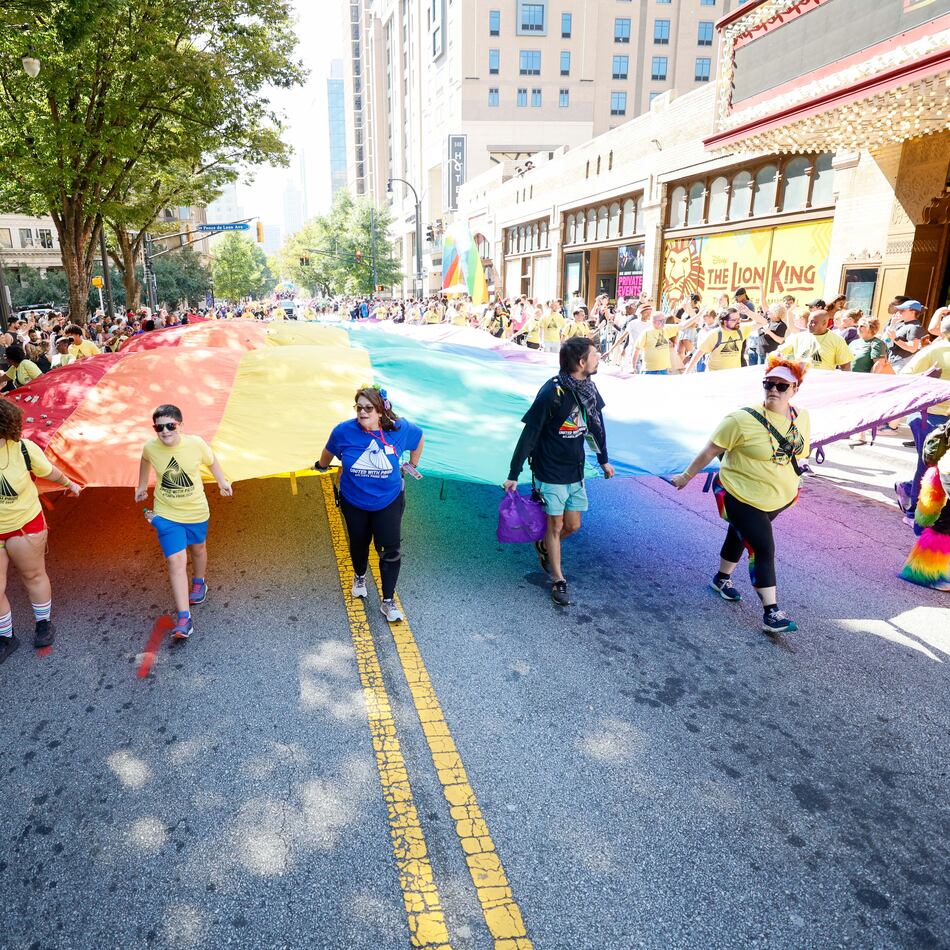The Black body is constantly attacked, violated, dehumanized. So, what happens when it is completely removed from a work of art? When artists of color pivot the focus away from the body and toward a different form of representation?
With the title "Elegies," it would be easy to make the phonic connection to eulogy and simplify the exhibition to one of tragedy and mourning. While those themes are present, this oversimplification would dismiss the layers of identity, culture, and the reclamation of the still life practice found in Elegies: Still Lifes in Contemporary Art.
The exhibition is now on view through Feb. 19, 2023 in the Jepson Center’s Levitt & Varnedoe Galleries.
Around 2016, New York-based independent curator Monique Long began noticing portrait artists of color shifting their practice into exploring still life. Initially, Long was only interested in the genre, but then began to tie pieces together based on the current events of targeted violence that many of the artists were reckoning with.
Credit: Courtesy of the artist
Credit: Courtesy of the artist
“I think one of the subtexts of the exhibition, like an anthology, is to sort of characterize a moment or a period or an era, and an exhibition does that as well,” says Long. “Clearly some of the artists are reckoning with civic unrest, you know, racial discourse, and the status of Blackness in this moment and responding to that in a particular way.”
However, she emphasizes that not every artist is responding in the same way. She even had to convince some artists to contribute their work to the show because they didn’t necessarily associate their pieces with Long’s concept.
While she considers Devan Shimoyama’s swings "For Tamir VII" and "For Tamir VIII," tributes and memorials to the late Tamir Rice, the “soul of the show,” she considers the pieces as such more for how they draw the viewer’s sightline than their concept.
The industrial vinyl playground swings, embellished with deep purple and rich blue silk flowers, shimmering rhinestones, jewelry, chains and other found objects bring an almost imperceptible movement and harrowing sentience to an exhibition centered around the rendering of inanimate objects.
Credit: Courtesy of the artist
Credit: Courtesy of the artist
Conversely, Njideka Akunyili Crosby’s "Grandmother’s Parlor" reflects on “her transnational identity as someone who’s Nigerian of Igbo ethnicity but has lived in the United States on the east and west coast for some time now.” Similar themes of identity and culture are found in Leslie Hewitt’s "Untitled (Maddened by Love)" and "Untitled (Double Entendre)" and David Antonio Cruz’s "thefog,suspendedovertheland."
Other works, such as Lakela Brown’s "Doorknocker Still Life Cluster with Eleven Golds," showcase a part of Black culture and attribute chunky gold bamboo earrings the cultural reverence that popular media would sooner strip away, remix, and repackage for mass consumption.
Really, only Elizabeth Colomba’s pieces "Coconut" and "Avocado" are visually reminiscent of 16th and 17th century Dutch still life paintings. The Telfair’s curator of modern and contemporary art Erin Dunn says, “I think maybe it looks like the most conventional still life in the show, but it's really layered and deep and connected to Elizabeth's personal journey as an artist.”
That journey being the connection between her Caribbean descent and the native fruits that were the primary subjects in Dutch still lifes because of the colonization that brought those fruits to Europe. It’s a reclamation of sorts. It challenges the viewer to reevaluate how the practice of Dutch still lifes was able to exist in the first place.
Credit: Courtesy of the artist and Alexander Berggruen, NY.
Credit: Courtesy of the artist and Alexander Berggruen, NY.
“[They’re] really thinking through what it means to remove the body or the human figure from the work to counteract a lot of more traumatic narratives that might be promoted in the news,” says Dunn. It’d be easy for a non-black audience to view any of these works as simply, shallowly beautiful without engaging with the context of how they came about.
However, like Long mentioned, social commentary is only a sliver of the exhibition. There is also a larger conversation of the Black urge and practically alchemic ability to craft art from nothing.
“You know, making something out of nothing, making songs as we worked in the fields that are still part of the American lexicon today, or a quilt or our cuisine,” Long says. “It's an inclination of being able to meet our creative imagination, collectively, to assuage, to resist, to create beauty. It's a great way to characterize Black culture.”
Yes, the Black body is beautiful. Our skin, our hair, our figure instills awe, envy, and fear.
Credit: Courtesy of the artist
Credit: Courtesy of the artist
Yes, it is a form of resistance to take up space, claim seats at tables, raise our fists to the sky and shout, “Enough.” But we are so much more than our body. Our presence extends beyond the physical.
Yes, an elegy is typically a lament for the dead, but it is ultimately a poem of serious reflection, which is exactly what the exhibition invites the audience to do.
IF YOU GO
What: Elegies: Still Lifes in Contemporary Art
When: On display through Feb. 23, 2023
Where: Jepson Center, 207 W. York St.
This article originally appeared on Savannah Morning News: ‘Elegies’ at the Jepson Center explores Blackness by reclaiming the practices of still lifes
MEET OUR PARTNER
Today’s story comes from our partner, Savannah Morning News. Savannah Morning News provides daily news coverage on Coastal Georgia. Visit them at savannahnow.com or on Twitter @SavannahNow.
If you have any feedback or questions about our partnerships, you can contact Senior Manager of Partnerships Nicole Williams via email at nicole.williams@ajc.com.
The Latest
Featured






